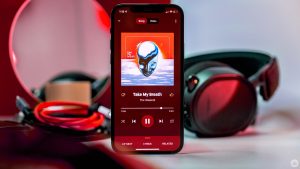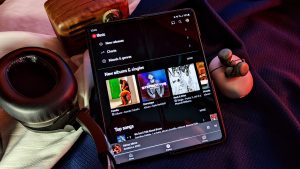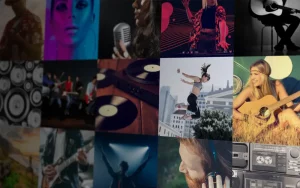Introduction
The music industry has undergone a seismic transformation over the past few decades, driven largely by the advent and proliferation of digital streaming platforms. These platforms have not only changed how we consume music but have also had a profound impact on the evolution of music genres themselves. This article explores the dynamic interplay between music genres and streaming, tracing the journey from traditional music distribution to the current digital age, and examining how this shift has influenced the creation, dissemination, and consumption of music.
The Pre-Streaming Era: A Brief Overview

-
Physical Media and Traditional Distribution
Before the rise of streaming, physical media such as vinyl records, cassette tapes, and CDs were the primary means of music distribution. Record stores were the hubs where music enthusiasts discovered new genres and artists. Radio stations and MTV also played pivotal roles in shaping public taste and promoting new music.
-
Genre Formation and Segmentation
During this period, music genres were relatively well-defined and segmented. Rock, pop, jazz, classical, and hip-hop, among others, each had distinct characteristics and dedicated fan bases. The discovery of new genres was often limited to word-of-mouth, radio airplay, and physical album purchases.
The Dawn of Digital Music

-
The MP3 Revolution
The late 1990s and early 2000s saw the advent of the MP3 format, which revolutionized music distribution by enabling digital compression of audio files. This led to the rise of file-sharing platforms like Napster, which, despite legal controversies, demonstrated the potential of digital music distribution.
-
The Birth of iTunes
Apple’s iTunes, launched in 2001, capitalized on the digital music trend by offering a legal and user-friendly platform for purchasing and downloading music. iTunes allowed users to buy individual tracks instead of entire albums, further altering how people consumed music.
The Streaming Era: A New Paradigm

-
The Rise of Streaming Services
The launch of Spotify in 2008 marked the beginning of the streaming era. Unlike previous digital platforms, Spotify and its successors like Apple Music, Tidal, and Amazon Music offered vast libraries of music accessible via subscription or ad-supported models. These platforms provided unprecedented access to a diverse array of music genres.
-
Algorithmic Playlists and Personalized Recommendations
One of the most significant innovations of streaming services is their use of algorithms to curate personalized playlists and recommendations. By analyzing user behavior, these platforms introduce listeners to new genres and artists they might not have discovered otherwise. This has led to a more fluid and dynamic understanding of music genres.
The Impact on Music Genres

-
Genre Blending and Hybridization
The ease of access to a wide variety of music has led to the blending and hybridization of genres. Artists are increasingly drawing from multiple genres to create unique sounds. For example, the genre of “trap” has evolved to incorporate elements from electronic, pop, and even country music.
-
The Rise of Niche Genres
Streaming platforms have also given rise to niche genres that might not have found a significant audience in the pre-streaming era. Genres like lo-fi hip-hop, vaporwave, and synthwave have gained substantial followings, thanks to the global reach of streaming services.
-
The Democratization of Music Production
The streaming era has democratized music production, allowing independent artists to distribute their music without the need for major record labels. This has led to a proliferation of diverse music genres, as artists from different backgrounds and cultures can share their unique sounds with a global audience.
Case Studies

-
Hip-Hop and Rap
Hip-hop and rap have seen significant evolution in the streaming era. The genre has expanded to include sub-genres like mumble rap, emo rap, and drill. Streaming platforms have played a crucial role in promoting these sub-genres, with artists like Lil Uzi Vert, Juice WRLD, and Pop Smoke gaining massive followings.
-
Electronic Dance Music (EDM)
EDM has also benefited from the streaming era. Platforms like Sound Cloud and YouTube have been instrumental in the rise of EDM sub-genres like future bass, trap, and tropical house. Artists like Marshmello, Kygo, and Flume have leveraged these platforms to reach global audiences.
-
K-Pop
K-Pop has become a global phenomenon, thanks in part to streaming services. Platforms like Spotify and YouTube have made it easier for international audiences to discover and enjoy K-Pop. Groups like BTS and BLACKPINK have achieved unprecedented global success, breaking language and cultural barriers.
Conclusion
The streaming era has fundamentally transformed the landscape of music genres. The accessibility and convenience of streaming platforms have facilitated the blending of genres, the rise of niche genres, and the democratization of music production. As technology continues to evolve, it will be fascinating to see how music genres continue to adapt and evolve in this ever-changing digital landscape.
In summary, the streaming era has not only changed how we consume music but has also reshaped the very nature of music genres. The future promises even more exciting developments as artists and listeners continue to navigate this dynamic and interconnected world of music.




